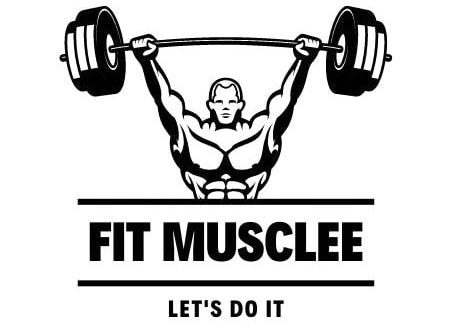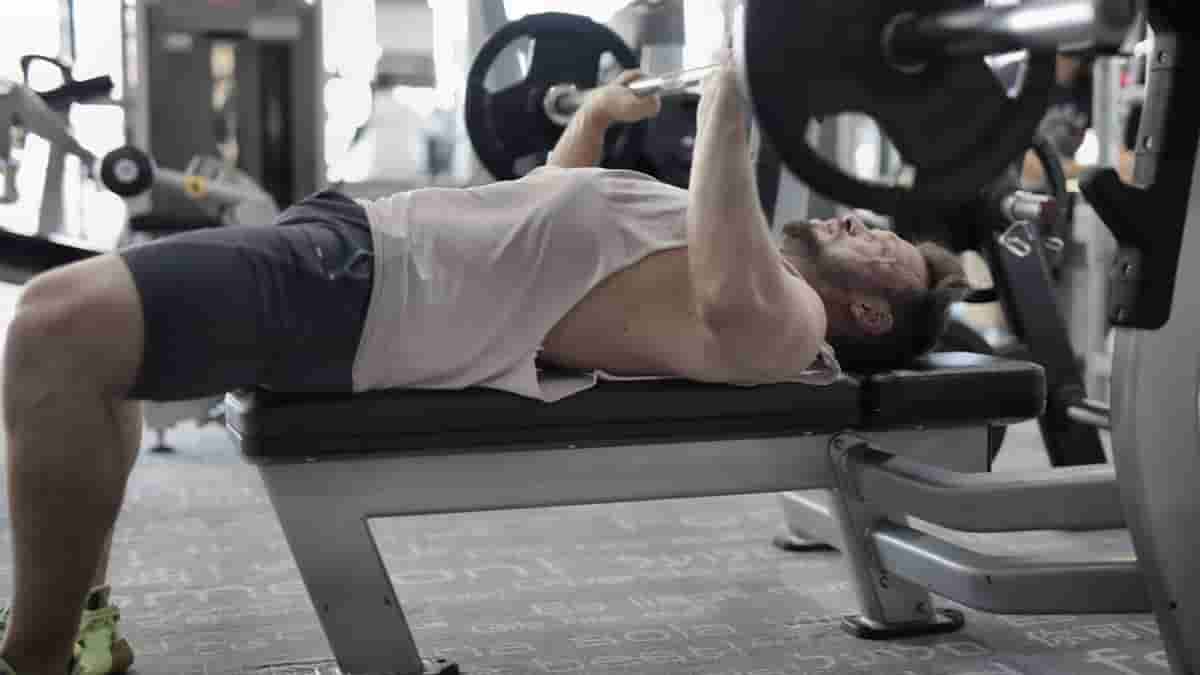Here is your complete guide to floor press vs bench.
Introduction to Floor Press vs Bench
Strength training is a cornerstone of fitness, offering numerous benefits for athletes and fitness enthusiasts alike. Among the myriad of exercises available, the floor press and bench press stand out as two popular options for developing upper body strength. In this article, we will delve into the floor press vs bench press debate, exploring their differences, benefits, and ideal usage scenarios. By the end, you’ll have a clearer understanding of which exercise might be best suited for your fitness goals.
Definition of Floor Press
The floor press is a strength training exercise performed while lying on the floor. It primarily targets the triceps and shoulders, making it an excellent option for isolating these muscle groups. The movement involves lowering a barbell (or dumbbells) from an extended position above the chest to the floor and then pressing it back up.
Definition of Bench Press
The bench press, on the other hand, is performed on a bench and engages multiple muscle groups, including the chest, triceps, and shoulders. This exercise allows for a greater range of motion compared to the floor press, as it involves lowering the barbell to the chest before pressing it back up.
Historical Context
Both exercises have been staples in strength training for decades. The bench press is often associated with bodybuilding and powerlifting competitions, while the floor press has gained popularity among those looking to enhance their triceps strength and shoulder stability.
Key Differences Between Floor Press vs Bench
Understanding the differences between these two exercises can help you make informed decisions about your training regimen.
Range of Motion: Floor Press vs Bench
The range of motion (ROM) is a critical factor in determining how effectively an exercise targets specific muscles.
| Exercise | Range of Motion | Impact on Muscle Activation |
|---|---|---|
| Floor Press | Limited | Primarily triceps, deltoids |
| Bench Press | Extensive | Chest, triceps, deltoids |
- Floor Press: The ROM is limited because you start from a position where your elbows are on the ground. This restricts how far you can lower the weight.
- Bench Press: Offers a full range of motion as you lower the barbell to your chest, allowing for greater activation of the pectoral muscles.
Muscle Activation: Floor Press vs Bench
Both exercises target different muscle groups more intensely:
- Floor Press:
- Primarily works the triceps.
- Engages deltoids but less emphasis on pectorals.
- Bench Press:
- Targets pectorals significantly.
- Engages triceps and deltoids as secondary muscles.
Joint Stress and Safety
One of the most significant considerations when choosing between these two exercises is joint stress:
- Floor Press:
- Generally places less strain on the shoulders due to limited ROM.
- Ideal for those recovering from shoulder injuries or looking to prevent them.
- Bench Press:
- Can put more stress on shoulder joints if not performed correctly.
- Requires proper form to avoid injuries.
Benefits of Floor Press vs Bench
Both exercises offer unique benefits that can complement your strength training routine.
Benefits of Floor Press
- Triceps Development: The floor press emphasizes triceps strength due to its limited ROM.
- Shoulder Safety: It is safer for individuals with shoulder issues or those recovering from injuries.
- Stability: The floor provides a stable surface that can help beginners focus on form without worrying about balance.
Benefits of Bench Press
- Chest Development: The bench press is one of the best exercises for building chest mass and strength.
- Overall Upper Body Strength: Engages multiple muscle groups, making it effective for overall upper body development.
- Powerlifting Focus: A staple in powerlifting competitions; improving your bench can enhance your competitive edge.
When to Use Floor Press vs Bench
Choosing when to incorporate either exercise into your routine depends on your goals and current fitness level.
Ideal Scenarios for Floor Press
- Injury Recovery: If you’re recovering from shoulder injuries or looking to prevent them.
- Triceps Focus: When your goal is to specifically target and strengthen your triceps.
- Supplemental Exercise: As part of a broader upper body workout routine focusing on stability.
Ideal Scenarios for Bench Press
- Hypertrophy Goals: If you’re aiming to build mass in your chest and overall upper body.
- Powerlifting Training: When preparing for competitions that require maximum strength in lifts.
- General Fitness: Suitable for anyone looking to improve overall upper body strength.
Equipment and Setup for Floor Press vs Bench
Understanding what equipment you need can enhance your workout experience.
Equipment Needed for Floor Press
- Barbell or Dumbbells: Choose weights that match your fitness level.
- Weights: Add plates as needed based on your strength.
- Safety Considerations:
- Use a power rack or spotter if lifting heavy weights to ensure safety.
Equipment Needed for Bench Press
- Bench: A sturdy flat or adjustable bench is essential.
- Barbell: Standard Olympic barbell recommended for heavier lifts.
- Weights: Again, ensure you have appropriate weights available.
- Safety Measures:
- Always use a spotter or safety bars when lifting heavy weights.
The Best Alternatives to Floor Press vs Bench
When considering upper body strength training, both the floor press and bench press are excellent exercises. However, there are several alternatives that can provide similar benefits while targeting different muscle groups or accommodating specific training needs. Below, we explore some of the best alternatives to the floor press and bench press, highlighting their unique advantages.
1. Dumbbell Chest Press
The dumbbell chest press is a versatile alternative that allows for a greater range of motion compared to the barbell bench press.
- Benefits:
- Increases stabilization demand, helping to address muscular imbalances.
- Reduces the risk of getting stuck under weights if you fail.
- Allows for a more natural movement pattern that can alleviate discomfort in the shoulders.
2. Dips
Dips are a compound exercise that primarily targets the triceps, chest, and shoulders.
- Benefits:
- Engages multiple muscle groups simultaneously.
- Can be performed using parallel bars or even a sturdy bench.
- Great for building upper body strength and muscle mass.
3. Push-Ups
Push-ups are a classic bodyweight exercise that can be modified for various fitness levels.
- Benefits:
- No equipment needed, making them highly accessible.
- Variations like incline or decline push-ups can target different muscle groups.
- Excellent for building functional strength and endurance.
4. Machine Chest Press
The machine chest press provides a controlled environment for pressing movements.
- Benefits:
- Reduces the risk of injury by guiding the movement path.
- Ideal for beginners who may struggle with free weights.
- Allows for focused isolation of the chest muscles.
5. Cable Chest Press
The cable chest press utilizes a cable machine to create constant tension throughout the movement.
- Benefits:
- Enables a greater range of motion than traditional presses.
- Provides continuous resistance, which can enhance muscle engagement.
- Versatile; can be adjusted for various angles to target different areas of the chest.
Comparison Table of Alternatives
| Exercise | Equipment Needed | Primary Muscles Targeted | Range of Motion | Skill Level Required |
|---|---|---|---|---|
| Dumbbell Chest Press | Dumbbells | Chest, Triceps | Full | Intermediate |
| Dips | Parallel Bars | Triceps, Chest | Moderate | Intermediate |
| Push-Ups | None | Chest, Triceps | Moderate | Beginner |
| Machine Chest Press | Machine | Chest | Controlled | Beginner |
| Cable Chest Press | Cable Machine | Chest, Shoulders | Full | Intermediate |
Common Mistakes to Avoid for Floor Press vs Bench
Proper form is crucial in both exercises to maximize benefits and minimize injury risks.
Mistakes in Floor Press Technique
- Incorrect Elbow Positioning:
- Keep elbows at about 45 degrees from your body; flaring them out can cause shoulder strain.
- Not Engaging Core Muscles:
- Failing to engage your core can lead to instability during lifts.
- Using Too Much Weight:
- Start light to master form before increasing weight.
Mistakes in Bench Press Technique
- Lifting Feet Off Ground:
- Keep feet flat on the ground; lifting them can lead to instability.
- Bouncing Bar Off Chest:
- Lower slowly; bouncing can lead to injuries.
- Flaring Elbows Outward:
- Maintain elbows at about 75 degrees from your torso to protect shoulders.
FAQs about Floor Press vs Bench
What are the main differences between floor press and bench press?
The primary differences lie in their range of motion, muscle activation patterns, and joint stress implications. The floor press has a limited ROM focusing more on triceps, while the bench press allows for greater chest engagement with a full ROM.
Read Also: Reverse Hack Squat Alternative.
Which exercise is better for building chest muscle?
The bench press is generally considered superior for building chest muscle due to its extensive range of motion that fully engages pectoral muscles.
Read Also: Single Leg Press Alternative.
Can floor press improve my bench press performance?
Yes! Incorporating floor presses can strengthen triceps and shoulders, which are crucial for improving overall bench press performance.
Read Also: High to Low Cable Flyes Alternative.
Is one exercise safer than the other?
The floor press tends to be safer due to its limited range of motion, which reduces shoulder strain. However, both exercises can be performed safely with proper technique.
Read Also: Alternatives to Hip Thrusts.
How often should I incorporate these exercises into my routine?
It depends on your goals! For balanced upper body development, consider incorporating both exercises into your routine once or twice per week each.
Read Also: Squat Deadlift Same Day.
Conclusion
In conclusion, both the floor press and bench press have unique advantages that cater to different fitness goals. Whether you’re focusing on triceps development with the floor press or seeking overall upper body strength with the bench press, understanding their differences will help you tailor your workouts effectively. As you navigate through your fitness journey, consider incorporating both exercises based on your individual needs and preferences.
Read Also: HIIT and Circuit Training.
Remember that consistency is key! Whichever exercise you choose, maintain proper form and gradually increase weights as you progress. Happy lifting!
Read Also: Hamstrings Sore After Deadlifts.
References and Resources Used in This Article:
- Floor Press vs. Bench Press: Pros, Cons, and Differences – Lift Vault
- Evidence mounts on the benefits of strength training | News – Harvard T.H. Chan School of Public Health
- Upper Body Workout for Women: 10 Best Exercises – Healthline
- The Effects of Bench Press Variations in Competitive Athletes on Muscle Activation – PubMed Central
- Adaptations to Endurance and Strength Training – PubMed Central

